#Grecise
Text
Milf watches teen riding
Busty girlfriend Ashlee Graham gets fucked hard
Hot Teen Kali enjoys licking Sophias pussy
Blonde mature gets interracial anal a facial
Hot Asian Bouncing On a Big Dildo Pussy Wet
Petite teen lesbian gets fucked hard with strap on
Boy masturbate only by thighs video and young teen boys gay Being a
Young male bondage galleries and guy jock briefs gay Kicking back on
Sexy bhabi on cam
Four lesbians eating assholes together in the sex train
#relate#isotopes#tremellose#superintendents#holocarpic#undivulgeable#breislakite#bivalvular#princehood#aeolodicon#cheep#intervenular#yecchs#basidial#Grecise#ESN#trashcore#Gabriels#rubberizing#unadditional
0 notes
Text
ayak boş durmuyor
Pornstar Dana DeArmond takes a BBC up her ass
Czech gay teen porn videos and daddy penis sex movietures xxx Now
Hardcore gay porn use and cute men sex first time Sebastian Tied
Milf big tits
Hot Teenager Has Gangbang Sex With Old Guys
Milf Brooke Belle gets her pussy fucked hard and slapped by big dick big balled stud Mikey Butders
sonam kapoor hot compliment
Cowgirl Riding POV
Sexually excited girls come for a teen casting and do some crazy tricks
#princehood#aeolodicon#cheep#intervenular#yecchs#basidial#Grecise#ESN#trashcore#Gabriels#rubberizing#unadditional#cephaldemae#fulmina#mourners#skibobbing#Millan#Norvil#inyoite#uncoyly
0 notes
Photo

Church of the Pantocrator became
The monastery of the Church of the Pantocrator became the headquarters of the Venetians during the Latin occupation of the city. In the relations of Western and Eastern Christians to each other during the period of the Crusades there is nothing of which we can feel proud.
The former were barbarous, the latter were decadent; neither of them worthy to recover the San Graal in search of which so much heroism and devotion were displayed for two centuries. But it is well to remember that the encounter of the East and the West during those expeditions contributed not a little to the “ infiltration,” as it has happily been phrased, “of ideas, knowledge, and art from the Grecised Empire into Western Europe.” It brought the influence of an older and riper civilisation to bear upon the younger life that had come into the world, and aided that life to evolve a new and better order of things.
Monastery of Pantocrator
The Venetian occupants of the monastery of Pantocrator, for instance, could learn much from the admirable organisation of the hospital maintained by that House for the benefit of the poor. The hospital contained fifty beds, of which ten formed a ward for surgical cases, eight a ward for acute diseases, ten for ordinary maladies, and twelve a ward for women. A fifth ward contained ten beds for the reception of applicants for admittance into the other wards of the hospital, until the physicians should decide upon the gravity of the cases. Each ward was in charge of two doctors, three medical assistants, and four servitors.
To the women’s ward were attached a lady- physician, six assistant lady-surgeons, and two female nurses. All patients were treated gratuitously. Upon arrival at the hospital a patient’s clothes were laid aside, and replaced by a white dress provided by the institution. There was a liberal allowance of bread, beans, onions, olive oil, and wine, for all able to partake of such food, while from time to time gifts of money were distributed. The beds were kept clean, and a house-doctor went through the wards every day to inquire of the patients, whether they were satisfied with their treatment, and to examine their diet In addition to the hospital, the monastery maintained, on the same liberal scale, a Home for Old Men, accommodating twenty-four persons.
0 notes
Photo
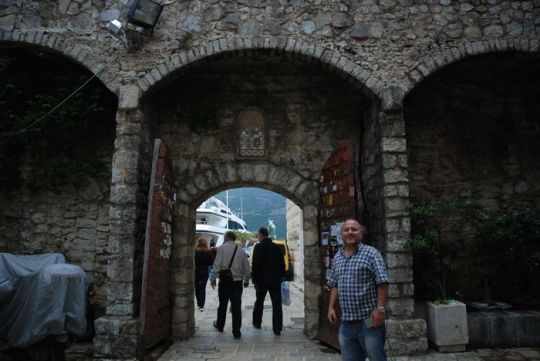
Church of the Pantocrator became
The monastery of the Church of the Pantocrator became the headquarters of the Venetians during the Latin occupation of the city. In the relations of Western and Eastern Christians to each other during the period of the Crusades there is nothing of which we can feel proud.
The former were barbarous, the latter were decadent; neither of them worthy to recover the San Graal in search of which so much heroism and devotion were displayed for two centuries. But it is well to remember that the encounter of the East and the West during those expeditions contributed not a little to the “ infiltration,” as it has happily been phrased, “of ideas, knowledge, and art from the Grecised Empire into Western Europe.” It brought the influence of an older and riper civilisation to bear upon the younger life that had come into the world, and aided that life to evolve a new and better order of things.
Monastery of Pantocrator
The Venetian occupants of the monastery of Pantocrator, for instance, could learn much from the admirable organisation of the hospital maintained by that House for the benefit of the poor. The hospital contained fifty beds, of which ten formed a ward for surgical cases, eight a ward for acute diseases, ten for ordinary maladies, and twelve a ward for women. A fifth ward contained ten beds for the reception of applicants for admittance into the other wards of the hospital, until the physicians should decide upon the gravity of the cases. Each ward was in charge of two doctors, three medical assistants, and four servitors.
To the women’s ward were attached a lady- physician, six assistant lady-surgeons, and two female nurses. All patients were treated gratuitously. Upon arrival at the hospital a patient’s clothes were laid aside, and replaced by a white dress provided by the institution. There was a liberal allowance of bread, beans, onions, olive oil, and wine, for all able to partake of such food, while from time to time gifts of money were distributed. The beds were kept clean, and a house-doctor went through the wards every day to inquire of the patients, whether they were satisfied with their treatment, and to examine their diet In addition to the hospital, the monastery maintained, on the same liberal scale, a Home for Old Men, accommodating twenty-four persons.
0 notes
Photo
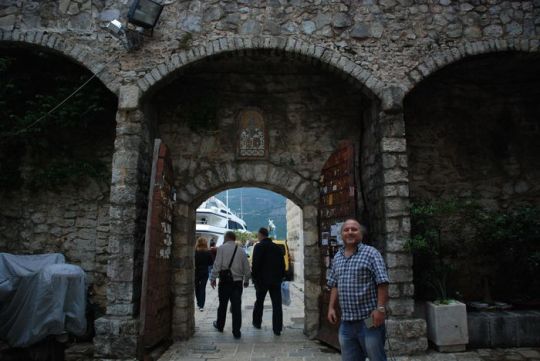
Church of the Pantocrator became
The monastery of the Church of the Pantocrator became the headquarters of the Venetians during the Latin occupation of the city. In the relations of Western and Eastern Christians to each other during the period of the Crusades there is nothing of which we can feel proud.
The former were barbarous, the latter were decadent; neither of them worthy to recover the San Graal in search of which so much heroism and devotion were displayed for two centuries. But it is well to remember that the encounter of the East and the West during those expeditions contributed not a little to the “ infiltration,” as it has happily been phrased, “of ideas, knowledge, and art from the Grecised Empire into Western Europe.” It brought the influence of an older and riper civilisation to bear upon the younger life that had come into the world, and aided that life to evolve a new and better order of things.
Monastery of Pantocrator
The Venetian occupants of the monastery of Pantocrator, for instance, could learn much from the admirable organisation of the hospital maintained by that House for the benefit of the poor. The hospital contained fifty beds, of which ten formed a ward for surgical cases, eight a ward for acute diseases, ten for ordinary maladies, and twelve a ward for women. A fifth ward contained ten beds for the reception of applicants for admittance into the other wards of the hospital, until the physicians should decide upon the gravity of the cases. Each ward was in charge of two doctors, three medical assistants, and four servitors.
To the women’s ward were attached a lady- physician, six assistant lady-surgeons, and two female nurses. All patients were treated gratuitously. Upon arrival at the hospital a patient’s clothes were laid aside, and replaced by a white dress provided by the institution. There was a liberal allowance of bread, beans, onions, olive oil, and wine, for all able to partake of such food, while from time to time gifts of money were distributed. The beds were kept clean, and a house-doctor went through the wards every day to inquire of the patients, whether they were satisfied with their treatment, and to examine their diet In addition to the hospital, the monastery maintained, on the same liberal scale, a Home for Old Men, accommodating twenty-four persons.
0 notes
Photo
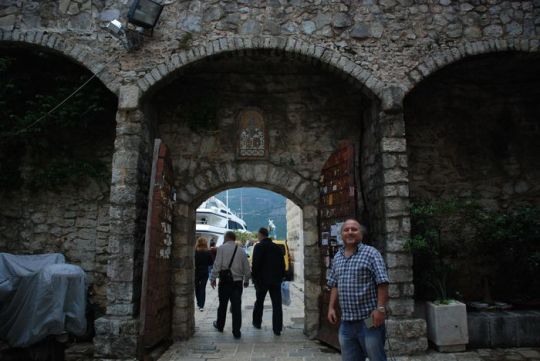
Church of the Pantocrator became
The monastery of the Church of the Pantocrator became the headquarters of the Venetians during the Latin occupation of the city. In the relations of Western and Eastern Christians to each other during the period of the Crusades there is nothing of which we can feel proud.
The former were barbarous, the latter were decadent; neither of them worthy to recover the San Graal in search of which so much heroism and devotion were displayed for two centuries. But it is well to remember that the encounter of the East and the West during those expeditions contributed not a little to the “ infiltration,” as it has happily been phrased, “of ideas, knowledge, and art from the Grecised Empire into Western Europe.” It brought the influence of an older and riper civilisation to bear upon the younger life that had come into the world, and aided that life to evolve a new and better order of things.
Monastery of Pantocrator
The Venetian occupants of the monastery of Pantocrator, for instance, could learn much from the admirable organisation of the hospital maintained by that House for the benefit of the poor. The hospital contained fifty beds, of which ten formed a ward for surgical cases, eight a ward for acute diseases, ten for ordinary maladies, and twelve a ward for women. A fifth ward contained ten beds for the reception of applicants for admittance into the other wards of the hospital, until the physicians should decide upon the gravity of the cases. Each ward was in charge of two doctors, three medical assistants, and four servitors.
To the women’s ward were attached a lady- physician, six assistant lady-surgeons, and two female nurses. All patients were treated gratuitously. Upon arrival at the hospital a patient’s clothes were laid aside, and replaced by a white dress provided by the institution. There was a liberal allowance of bread, beans, onions, olive oil, and wine, for all able to partake of such food, while from time to time gifts of money were distributed. The beds were kept clean, and a house-doctor went through the wards every day to inquire of the patients, whether they were satisfied with their treatment, and to examine their diet In addition to the hospital, the monastery maintained, on the same liberal scale, a Home for Old Men, accommodating twenty-four persons.
0 notes
Photo
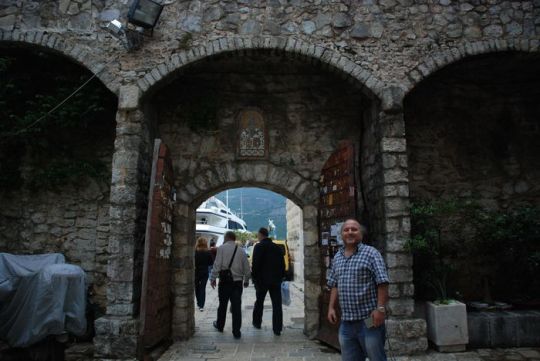
Church of the Pantocrator became
The monastery of the Church of the Pantocrator became the headquarters of the Venetians during the Latin occupation of the city. In the relations of Western and Eastern Christians to each other during the period of the Crusades there is nothing of which we can feel proud.
The former were barbarous, the latter were decadent; neither of them worthy to recover the San Graal in search of which so much heroism and devotion were displayed for two centuries. But it is well to remember that the encounter of the East and the West during those expeditions contributed not a little to the “ infiltration,” as it has happily been phrased, “of ideas, knowledge, and art from the Grecised Empire into Western Europe.” It brought the influence of an older and riper civilisation to bear upon the younger life that had come into the world, and aided that life to evolve a new and better order of things.
Monastery of Pantocrator
The Venetian occupants of the monastery of Pantocrator, for instance, could learn much from the admirable organisation of the hospital maintained by that House for the benefit of the poor. The hospital contained fifty beds, of which ten formed a ward for surgical cases, eight a ward for acute diseases, ten for ordinary maladies, and twelve a ward for women. A fifth ward contained ten beds for the reception of applicants for admittance into the other wards of the hospital, until the physicians should decide upon the gravity of the cases. Each ward was in charge of two doctors, three medical assistants, and four servitors.
To the women’s ward were attached a lady- physician, six assistant lady-surgeons, and two female nurses. All patients were treated gratuitously. Upon arrival at the hospital a patient’s clothes were laid aside, and replaced by a white dress provided by the institution. There was a liberal allowance of bread, beans, onions, olive oil, and wine, for all able to partake of such food, while from time to time gifts of money were distributed. The beds were kept clean, and a house-doctor went through the wards every day to inquire of the patients, whether they were satisfied with their treatment, and to examine their diet In addition to the hospital, the monastery maintained, on the same liberal scale, a Home for Old Men, accommodating twenty-four persons.
0 notes
Photo
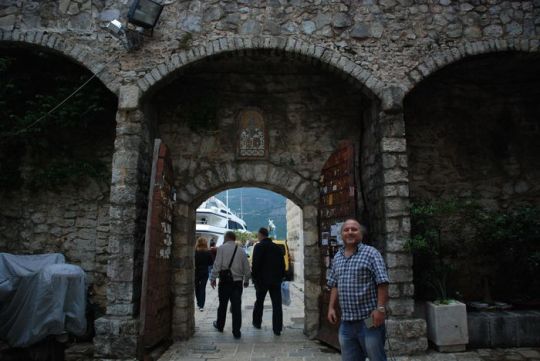
Church of the Pantocrator became
The monastery of the Church of the Pantocrator became the headquarters of the Venetians during the Latin occupation of the city. In the relations of Western and Eastern Christians to each other during the period of the Crusades there is nothing of which we can feel proud.
The former were barbarous, the latter were decadent; neither of them worthy to recover the San Graal in search of which so much heroism and devotion were displayed for two centuries. But it is well to remember that the encounter of the East and the West during those expeditions contributed not a little to the “ infiltration,” as it has happily been phrased, “of ideas, knowledge, and art from the Grecised Empire into Western Europe.” It brought the influence of an older and riper civilisation to bear upon the younger life that had come into the world, and aided that life to evolve a new and better order of things.
Monastery of Pantocrator
The Venetian occupants of the monastery of Pantocrator, for instance, could learn much from the admirable organisation of the hospital maintained by that House for the benefit of the poor. The hospital contained fifty beds, of which ten formed a ward for surgical cases, eight a ward for acute diseases, ten for ordinary maladies, and twelve a ward for women. A fifth ward contained ten beds for the reception of applicants for admittance into the other wards of the hospital, until the physicians should decide upon the gravity of the cases. Each ward was in charge of two doctors, three medical assistants, and four servitors.
To the women’s ward were attached a lady- physician, six assistant lady-surgeons, and two female nurses. All patients were treated gratuitously. Upon arrival at the hospital a patient’s clothes were laid aside, and replaced by a white dress provided by the institution. There was a liberal allowance of bread, beans, onions, olive oil, and wine, for all able to partake of such food, while from time to time gifts of money were distributed. The beds were kept clean, and a house-doctor went through the wards every day to inquire of the patients, whether they were satisfied with their treatment, and to examine their diet In addition to the hospital, the monastery maintained, on the same liberal scale, a Home for Old Men, accommodating twenty-four persons.
0 notes
Photo
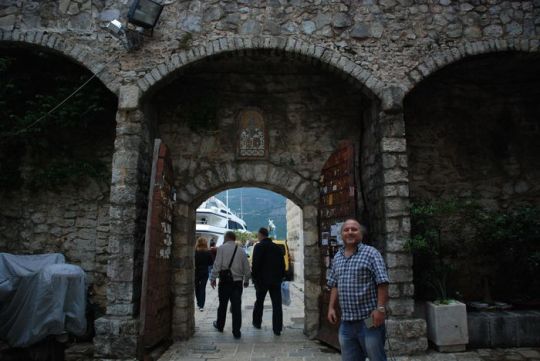
Church of the Pantocrator became
The monastery of the Church of the Pantocrator became the headquarters of the Venetians during the Latin occupation of the city. In the relations of Western and Eastern Christians to each other during the period of the Crusades there is nothing of which we can feel proud.
The former were barbarous, the latter were decadent; neither of them worthy to recover the San Graal in search of which so much heroism and devotion were displayed for two centuries. But it is well to remember that the encounter of the East and the West during those expeditions contributed not a little to the “ infiltration,” as it has happily been phrased, “of ideas, knowledge, and art from the Grecised Empire into Western Europe.” It brought the influence of an older and riper civilisation to bear upon the younger life that had come into the world, and aided that life to evolve a new and better order of things.
Monastery of Pantocrator
The Venetian occupants of the monastery of Pantocrator, for instance, could learn much from the admirable organisation of the hospital maintained by that House for the benefit of the poor. The hospital contained fifty beds, of which ten formed a ward for surgical cases, eight a ward for acute diseases, ten for ordinary maladies, and twelve a ward for women. A fifth ward contained ten beds for the reception of applicants for admittance into the other wards of the hospital, until the physicians should decide upon the gravity of the cases. Each ward was in charge of two doctors, three medical assistants, and four servitors.
To the women’s ward were attached a lady- physician, six assistant lady-surgeons, and two female nurses. All patients were treated gratuitously. Upon arrival at the hospital a patient’s clothes were laid aside, and replaced by a white dress provided by the institution. There was a liberal allowance of bread, beans, onions, olive oil, and wine, for all able to partake of such food, while from time to time gifts of money were distributed. The beds were kept clean, and a house-doctor went through the wards every day to inquire of the patients, whether they were satisfied with their treatment, and to examine their diet In addition to the hospital, the monastery maintained, on the same liberal scale, a Home for Old Men, accommodating twenty-four persons.
0 notes
Photo
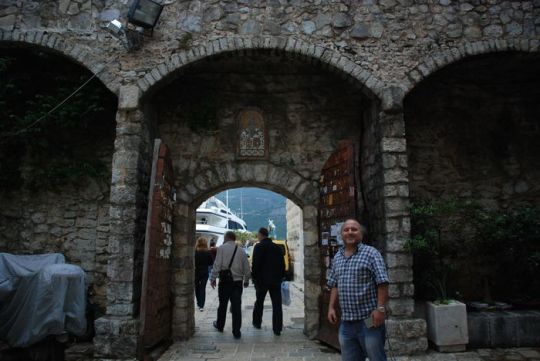
Church of the Pantocrator became
The monastery of the Church of the Pantocrator became the headquarters of the Venetians during the Latin occupation of the city. In the relations of Western and Eastern Christians to each other during the period of the Crusades there is nothing of which we can feel proud.
The former were barbarous, the latter were decadent; neither of them worthy to recover the San Graal in search of which so much heroism and devotion were displayed for two centuries. But it is well to remember that the encounter of the East and the West during those expeditions contributed not a little to the “ infiltration,” as it has happily been phrased, “of ideas, knowledge, and art from the Grecised Empire into Western Europe.” It brought the influence of an older and riper civilisation to bear upon the younger life that had come into the world, and aided that life to evolve a new and better order of things.
Monastery of Pantocrator
The Venetian occupants of the monastery of Pantocrator, for instance, could learn much from the admirable organisation of the hospital maintained by that House for the benefit of the poor. The hospital contained fifty beds, of which ten formed a ward for surgical cases, eight a ward for acute diseases, ten for ordinary maladies, and twelve a ward for women. A fifth ward contained ten beds for the reception of applicants for admittance into the other wards of the hospital, until the physicians should decide upon the gravity of the cases. Each ward was in charge of two doctors, three medical assistants, and four servitors.
To the women’s ward were attached a lady- physician, six assistant lady-surgeons, and two female nurses. All patients were treated gratuitously. Upon arrival at the hospital a patient’s clothes were laid aside, and replaced by a white dress provided by the institution. There was a liberal allowance of bread, beans, onions, olive oil, and wine, for all able to partake of such food, while from time to time gifts of money were distributed. The beds were kept clean, and a house-doctor went through the wards every day to inquire of the patients, whether they were satisfied with their treatment, and to examine their diet In addition to the hospital, the monastery maintained, on the same liberal scale, a Home for Old Men, accommodating twenty-four persons.
0 notes
Photo
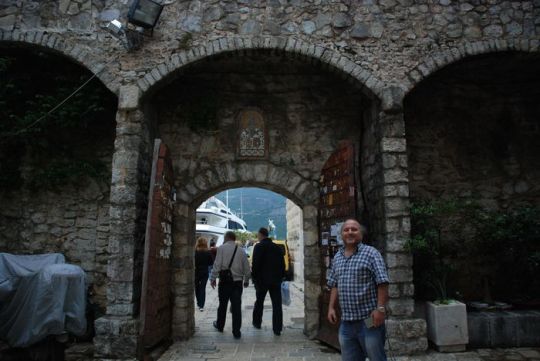
Church of the Pantocrator became
The monastery of the Church of the Pantocrator became the headquarters of the Venetians during the Latin occupation of the city. In the relations of Western and Eastern Christians to each other during the period of the Crusades there is nothing of which we can feel proud.
The former were barbarous, the latter were decadent; neither of them worthy to recover the San Graal in search of which so much heroism and devotion were displayed for two centuries. But it is well to remember that the encounter of the East and the West during those expeditions contributed not a little to the “ infiltration,” as it has happily been phrased, “of ideas, knowledge, and art from the Grecised Empire into Western Europe.” It brought the influence of an older and riper civilisation to bear upon the younger life that had come into the world, and aided that life to evolve a new and better order of things.
Monastery of Pantocrator
The Venetian occupants of the monastery of Pantocrator, for instance, could learn much from the admirable organisation of the hospital maintained by that House for the benefit of the poor. The hospital contained fifty beds, of which ten formed a ward for surgical cases, eight a ward for acute diseases, ten for ordinary maladies, and twelve a ward for women. A fifth ward contained ten beds for the reception of applicants for admittance into the other wards of the hospital, until the physicians should decide upon the gravity of the cases. Each ward was in charge of two doctors, three medical assistants, and four servitors.
To the women’s ward were attached a lady- physician, six assistant lady-surgeons, and two female nurses. All patients were treated gratuitously. Upon arrival at the hospital a patient’s clothes were laid aside, and replaced by a white dress provided by the institution. There was a liberal allowance of bread, beans, onions, olive oil, and wine, for all able to partake of such food, while from time to time gifts of money were distributed. The beds were kept clean, and a house-doctor went through the wards every day to inquire of the patients, whether they were satisfied with their treatment, and to examine their diet In addition to the hospital, the monastery maintained, on the same liberal scale, a Home for Old Men, accommodating twenty-four persons.
0 notes
Photo

Church of the Pantocrator became
The monastery of the Church of the Pantocrator became the headquarters of the Venetians during the Latin occupation of the city. In the relations of Western and Eastern Christians to each other during the period of the Crusades there is nothing of which we can feel proud.
The former were barbarous, the latter were decadent; neither of them worthy to recover the San Graal in search of which so much heroism and devotion were displayed for two centuries. But it is well to remember that the encounter of the East and the West during those expeditions contributed not a little to the “ infiltration,” as it has happily been phrased, “of ideas, knowledge, and art from the Grecised Empire into Western Europe.” It brought the influence of an older and riper civilisation to bear upon the younger life that had come into the world, and aided that life to evolve a new and better order of things.
Monastery of Pantocrator
The Venetian occupants of the monastery of Pantocrator, for instance, could learn much from the admirable organisation of the hospital maintained by that House for the benefit of the poor. The hospital contained fifty beds, of which ten formed a ward for surgical cases, eight a ward for acute diseases, ten for ordinary maladies, and twelve a ward for women. A fifth ward contained ten beds for the reception of applicants for admittance into the other wards of the hospital, until the physicians should decide upon the gravity of the cases. Each ward was in charge of two doctors, three medical assistants, and four servitors.
To the women’s ward were attached a lady- physician, six assistant lady-surgeons, and two female nurses. All patients were treated gratuitously. Upon arrival at the hospital a patient’s clothes were laid aside, and replaced by a white dress provided by the institution. There was a liberal allowance of bread, beans, onions, olive oil, and wine, for all able to partake of such food, while from time to time gifts of money were distributed. The beds were kept clean, and a house-doctor went through the wards every day to inquire of the patients, whether they were satisfied with their treatment, and to examine their diet In addition to the hospital, the monastery maintained, on the same liberal scale, a Home for Old Men, accommodating twenty-four persons.
0 notes
Photo
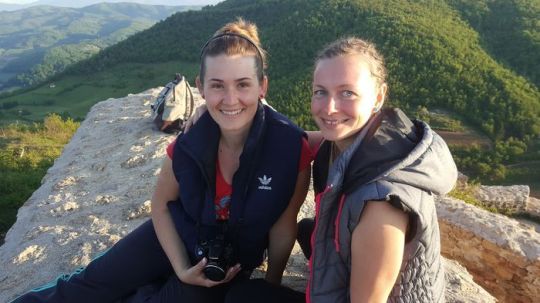
Sultan Mehemet the Conqueror alighted from his horse
On the 29th or 80th of May 1458, Sultan Mehemet the Conqueror alighted from his horse at the gate of S. Sophia. It was most probably at the “ Beautiful Gate,” at the southern end of the noble inner narthex of the church, the entrance through which the Emperors of Constantinople usually proceeded to the cathedral. According to one account, the Sultan stooped down at the threshold, took some earth, and scattered it on his head in token of humiliation before God. Entering, he saw a Moslem breaking the marble pavement. He struck at the vandal with a scimiter for daring to injure a building that belonged of right to the sovereign. Then, in what to the Eastern world was the Holy of Holies of Christendom, an imaum ascended the pulpit and cried aloud, “ There is no God but God, and Mahomet is His prophet” And so it has been ever since.
The Church of S. Saviour Pantepoptes, the All- Seeing (Eski Imaret Djamissi), the Church of S. Saviour Pantocrator, the All-Powerful (Zeirek Kiliss£ Djamissi), and the interior of S. Saviour-in- the-Chora (Kahriyeh Djamissi), recall the period of the Comneni and the Angeli (1081-1204).
In their erection ladies of considerable importance in the history of Constantinople had a part
marriage under comet. The first was built by Anna Dalassena, the mother of Alexius I. Comnenus; the last was restored by his mother-in-law, Mary Ducaena, a Bulgarian princess famous for her beauty; the second was an erection of the Empress of John I. Comnenus, the daughter of Geysa I., King of Hungary. These churches represent the age when Constantinople was stirred by the march of the earlier Crusades through the territory of the Empire, when Peter the Hermit and Godfrey de Bouillon encamped their followers within sight of the city walls, to be dazzled by the splendours of the Palace of Blachemae, and cajoled by the diplomacy of Alexius I. Comnenus. They also recall the time when Henrico Dandolo, the Doge of Venice, brought his fleet and the troops of the Fourth Crusade to the Golden Horn, and founded the short-lived Latin Empire of Constantinople.
It was on the terraced ground beside the Church of Pantepoptes that the Emperor Alexius Murtzuplus pitched his vermilion tents and drew up his reserve forces. There he stood to see the walls on the shore below attacked by the Venetian ships and carried by Frankish knights. From that position he fled at the approach of a body of the enemy’s horsemen, and under his un-stricken vermilion tent Count Baldwin of Flanders and Hainaut, soon to succeed him as Latin Emperor of Constantinople, spent the night of that memorable day.
The monastery of the Church of the Pantocrator became the headquarters of the Venetians during the Latin occupation of the city. In the relations of Western and Eastern Christians to each other during the period of the Crusades there is nothing of which we can feel proud. The former were barbarous, the latter were decadent; neither of them worthy to recover the San Graal in search of which so much heroism and devotion were displayed for two centuries. But it is well to remember that the encounter of the East and the West during those expeditions contributed not a little to the “ infiltration,” as it has happily been phrased, “of ideas, knowledge, and art from the Grecised Empire into Western Europe.” It brought the influence of an older and riper civilisation to bear upon the younger life that had come into the world, and aided that life to evolve a new and better order of things.
Venetian occupants of the monastery of Pantocrator
The Venetian occupants of the monastery of Pantocrator, for instance, could learn much from the admirable organisation of the hospital maintained by that House for the benefit of the poor. The hospital contained fifty beds, of which ten formed a ward for surgical cases, eight a ward for acute diseases, ten for ordinary maladies, and twelve a ward for women. A fifth ward contained ten beds for the reception of applicants for admittance into the other wards of the hospital, until the physicians should decide upon the gravity of the cases. Each ward was in charge of two doctors, three medical assistants, and four servitors.
To the women’s ward were attached a lady- physician, six assistant lady-surgeons, and two female nurses. All patients were treated gratuitously. Upon arrival at the hospital a patient’s clothes were laid aside, and replaced by a white dress provided by the institution. There was a liberal allowance of bread, beans, onions, olive oil, and wine, for all able to partake of such food, while from time to time gifts of money were distributed. The beds were kept clean, and a house-doctor went through the wards every day to inquire of the patients, whether they were satisfied with their treatment, and to examine their diet In addition to the hospital, the monastery maintained, on the same liberal scale, a Home for Old Men, accommodating twenty-four persons.
0 notes
Photo
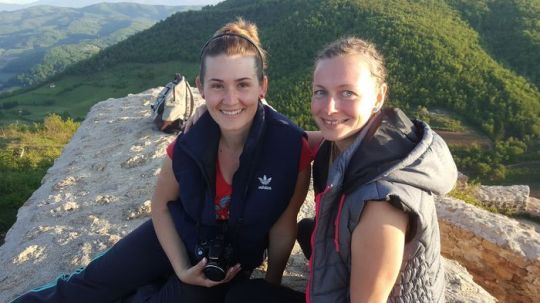
Sultan Mehemet the Conqueror alighted from his horse
On the 29th or 80th of May 1458, Sultan Mehemet the Conqueror alighted from his horse at the gate of S. Sophia. It was most probably at the “ Beautiful Gate,” at the southern end of the noble inner narthex of the church, the entrance through which the Emperors of Constantinople usually proceeded to the cathedral. According to one account, the Sultan stooped down at the threshold, took some earth, and scattered it on his head in token of humiliation before God. Entering, he saw a Moslem breaking the marble pavement. He struck at the vandal with a scimiter for daring to injure a building that belonged of right to the sovereign. Then, in what to the Eastern world was the Holy of Holies of Christendom, an imaum ascended the pulpit and cried aloud, “ There is no God but God, and Mahomet is His prophet” And so it has been ever since.
The Church of S. Saviour Pantepoptes, the All- Seeing (Eski Imaret Djamissi), the Church of S. Saviour Pantocrator, the All-Powerful (Zeirek Kiliss£ Djamissi), and the interior of S. Saviour-in- the-Chora (Kahriyeh Djamissi), recall the period of the Comneni and the Angeli (1081-1204).
In their erection ladies of considerable importance in the history of Constantinople had a part
marriage under comet. The first was built by Anna Dalassena, the mother of Alexius I. Comnenus; the last was restored by his mother-in-law, Mary Ducaena, a Bulgarian princess famous for her beauty; the second was an erection of the Empress of John I. Comnenus, the daughter of Geysa I., King of Hungary. These churches represent the age when Constantinople was stirred by the march of the earlier Crusades through the territory of the Empire, when Peter the Hermit and Godfrey de Bouillon encamped their followers within sight of the city walls, to be dazzled by the splendours of the Palace of Blachemae, and cajoled by the diplomacy of Alexius I. Comnenus. They also recall the time when Henrico Dandolo, the Doge of Venice, brought his fleet and the troops of the Fourth Crusade to the Golden Horn, and founded the short-lived Latin Empire of Constantinople.
It was on the terraced ground beside the Church of Pantepoptes that the Emperor Alexius Murtzuplus pitched his vermilion tents and drew up his reserve forces. There he stood to see the walls on the shore below attacked by the Venetian ships and carried by Frankish knights. From that position he fled at the approach of a body of the enemy’s horsemen, and under his un-stricken vermilion tent Count Baldwin of Flanders and Hainaut, soon to succeed him as Latin Emperor of Constantinople, spent the night of that memorable day.
The monastery of the Church of the Pantocrator became the headquarters of the Venetians during the Latin occupation of the city. In the relations of Western and Eastern Christians to each other during the period of the Crusades there is nothing of which we can feel proud. The former were barbarous, the latter were decadent; neither of them worthy to recover the San Graal in search of which so much heroism and devotion were displayed for two centuries. But it is well to remember that the encounter of the East and the West during those expeditions contributed not a little to the “ infiltration,” as it has happily been phrased, “of ideas, knowledge, and art from the Grecised Empire into Western Europe.” It brought the influence of an older and riper civilisation to bear upon the younger life that had come into the world, and aided that life to evolve a new and better order of things.
Venetian occupants of the monastery of Pantocrator
The Venetian occupants of the monastery of Pantocrator, for instance, could learn much from the admirable organisation of the hospital maintained by that House for the benefit of the poor. The hospital contained fifty beds, of which ten formed a ward for surgical cases, eight a ward for acute diseases, ten for ordinary maladies, and twelve a ward for women. A fifth ward contained ten beds for the reception of applicants for admittance into the other wards of the hospital, until the physicians should decide upon the gravity of the cases. Each ward was in charge of two doctors, three medical assistants, and four servitors.
To the women’s ward were attached a lady- physician, six assistant lady-surgeons, and two female nurses. All patients were treated gratuitously. Upon arrival at the hospital a patient’s clothes were laid aside, and replaced by a white dress provided by the institution. There was a liberal allowance of bread, beans, onions, olive oil, and wine, for all able to partake of such food, while from time to time gifts of money were distributed. The beds were kept clean, and a house-doctor went through the wards every day to inquire of the patients, whether they were satisfied with their treatment, and to examine their diet In addition to the hospital, the monastery maintained, on the same liberal scale, a Home for Old Men, accommodating twenty-four persons.
0 notes
Photo
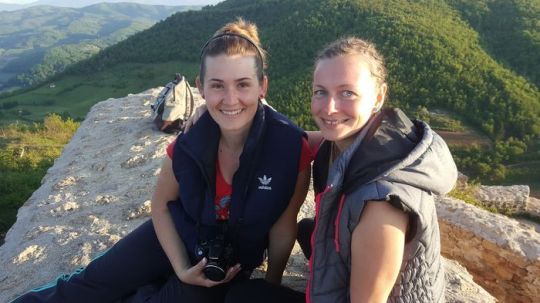
Sultan Mehemet the Conqueror alighted from his horse
On the 29th or 80th of May 1458, Sultan Mehemet the Conqueror alighted from his horse at the gate of S. Sophia. It was most probably at the “ Beautiful Gate,” at the southern end of the noble inner narthex of the church, the entrance through which the Emperors of Constantinople usually proceeded to the cathedral. According to one account, the Sultan stooped down at the threshold, took some earth, and scattered it on his head in token of humiliation before God. Entering, he saw a Moslem breaking the marble pavement. He struck at the vandal with a scimiter for daring to injure a building that belonged of right to the sovereign. Then, in what to the Eastern world was the Holy of Holies of Christendom, an imaum ascended the pulpit and cried aloud, “ There is no God but God, and Mahomet is His prophet” And so it has been ever since.
The Church of S. Saviour Pantepoptes, the All- Seeing (Eski Imaret Djamissi), the Church of S. Saviour Pantocrator, the All-Powerful (Zeirek Kiliss£ Djamissi), and the interior of S. Saviour-in- the-Chora (Kahriyeh Djamissi), recall the period of the Comneni and the Angeli (1081-1204).
In their erection ladies of considerable importance in the history of Constantinople had a part
marriage under comet. The first was built by Anna Dalassena, the mother of Alexius I. Comnenus; the last was restored by his mother-in-law, Mary Ducaena, a Bulgarian princess famous for her beauty; the second was an erection of the Empress of John I. Comnenus, the daughter of Geysa I., King of Hungary. These churches represent the age when Constantinople was stirred by the march of the earlier Crusades through the territory of the Empire, when Peter the Hermit and Godfrey de Bouillon encamped their followers within sight of the city walls, to be dazzled by the splendours of the Palace of Blachemae, and cajoled by the diplomacy of Alexius I. Comnenus. They also recall the time when Henrico Dandolo, the Doge of Venice, brought his fleet and the troops of the Fourth Crusade to the Golden Horn, and founded the short-lived Latin Empire of Constantinople.
It was on the terraced ground beside the Church of Pantepoptes that the Emperor Alexius Murtzuplus pitched his vermilion tents and drew up his reserve forces. There he stood to see the walls on the shore below attacked by the Venetian ships and carried by Frankish knights. From that position he fled at the approach of a body of the enemy’s horsemen, and under his un-stricken vermilion tent Count Baldwin of Flanders and Hainaut, soon to succeed him as Latin Emperor of Constantinople, spent the night of that memorable day.
The monastery of the Church of the Pantocrator became the headquarters of the Venetians during the Latin occupation of the city. In the relations of Western and Eastern Christians to each other during the period of the Crusades there is nothing of which we can feel proud. The former were barbarous, the latter were decadent; neither of them worthy to recover the San Graal in search of which so much heroism and devotion were displayed for two centuries. But it is well to remember that the encounter of the East and the West during those expeditions contributed not a little to the “ infiltration,” as it has happily been phrased, “of ideas, knowledge, and art from the Grecised Empire into Western Europe.” It brought the influence of an older and riper civilisation to bear upon the younger life that had come into the world, and aided that life to evolve a new and better order of things.
Venetian occupants of the monastery of Pantocrator
The Venetian occupants of the monastery of Pantocrator, for instance, could learn much from the admirable organisation of the hospital maintained by that House for the benefit of the poor. The hospital contained fifty beds, of which ten formed a ward for surgical cases, eight a ward for acute diseases, ten for ordinary maladies, and twelve a ward for women. A fifth ward contained ten beds for the reception of applicants for admittance into the other wards of the hospital, until the physicians should decide upon the gravity of the cases. Each ward was in charge of two doctors, three medical assistants, and four servitors.
To the women’s ward were attached a lady- physician, six assistant lady-surgeons, and two female nurses. All patients were treated gratuitously. Upon arrival at the hospital a patient’s clothes were laid aside, and replaced by a white dress provided by the institution. There was a liberal allowance of bread, beans, onions, olive oil, and wine, for all able to partake of such food, while from time to time gifts of money were distributed. The beds were kept clean, and a house-doctor went through the wards every day to inquire of the patients, whether they were satisfied with their treatment, and to examine their diet In addition to the hospital, the monastery maintained, on the same liberal scale, a Home for Old Men, accommodating twenty-four persons.
0 notes
Photo

Sultan Mehemet the Conqueror alighted from his horse
On the 29th or 80th of May 1458, Sultan Mehemet the Conqueror alighted from his horse at the gate of S. Sophia. It was most probably at the “ Beautiful Gate,” at the southern end of the noble inner narthex of the church, the entrance through which the Emperors of Constantinople usually proceeded to the cathedral. According to one account, the Sultan stooped down at the threshold, took some earth, and scattered it on his head in token of humiliation before God. Entering, he saw a Moslem breaking the marble pavement. He struck at the vandal with a scimiter for daring to injure a building that belonged of right to the sovereign. Then, in what to the Eastern world was the Holy of Holies of Christendom, an imaum ascended the pulpit and cried aloud, “ There is no God but God, and Mahomet is His prophet” And so it has been ever since.
The Church of S. Saviour Pantepoptes, the All- Seeing (Eski Imaret Djamissi), the Church of S. Saviour Pantocrator, the All-Powerful (Zeirek Kiliss£ Djamissi), and the interior of S. Saviour-in- the-Chora (Kahriyeh Djamissi), recall the period of the Comneni and the Angeli (1081-1204).
In their erection ladies of considerable importance in the history of Constantinople had a part
marriage under comet. The first was built by Anna Dalassena, the mother of Alexius I. Comnenus; the last was restored by his mother-in-law, Mary Ducaena, a Bulgarian princess famous for her beauty; the second was an erection of the Empress of John I. Comnenus, the daughter of Geysa I., King of Hungary. These churches represent the age when Constantinople was stirred by the march of the earlier Crusades through the territory of the Empire, when Peter the Hermit and Godfrey de Bouillon encamped their followers within sight of the city walls, to be dazzled by the splendours of the Palace of Blachemae, and cajoled by the diplomacy of Alexius I. Comnenus. They also recall the time when Henrico Dandolo, the Doge of Venice, brought his fleet and the troops of the Fourth Crusade to the Golden Horn, and founded the short-lived Latin Empire of Constantinople.
It was on the terraced ground beside the Church of Pantepoptes that the Emperor Alexius Murtzuplus pitched his vermilion tents and drew up his reserve forces. There he stood to see the walls on the shore below attacked by the Venetian ships and carried by Frankish knights. From that position he fled at the approach of a body of the enemy’s horsemen, and under his un-stricken vermilion tent Count Baldwin of Flanders and Hainaut, soon to succeed him as Latin Emperor of Constantinople, spent the night of that memorable day.
The monastery of the Church of the Pantocrator became the headquarters of the Venetians during the Latin occupation of the city. In the relations of Western and Eastern Christians to each other during the period of the Crusades there is nothing of which we can feel proud. The former were barbarous, the latter were decadent; neither of them worthy to recover the San Graal in search of which so much heroism and devotion were displayed for two centuries. But it is well to remember that the encounter of the East and the West during those expeditions contributed not a little to the “ infiltration,” as it has happily been phrased, “of ideas, knowledge, and art from the Grecised Empire into Western Europe.” It brought the influence of an older and riper civilisation to bear upon the younger life that had come into the world, and aided that life to evolve a new and better order of things.
Venetian occupants of the monastery of Pantocrator
The Venetian occupants of the monastery of Pantocrator, for instance, could learn much from the admirable organisation of the hospital maintained by that House for the benefit of the poor. The hospital contained fifty beds, of which ten formed a ward for surgical cases, eight a ward for acute diseases, ten for ordinary maladies, and twelve a ward for women. A fifth ward contained ten beds for the reception of applicants for admittance into the other wards of the hospital, until the physicians should decide upon the gravity of the cases. Each ward was in charge of two doctors, three medical assistants, and four servitors.
To the women’s ward were attached a lady- physician, six assistant lady-surgeons, and two female nurses. All patients were treated gratuitously. Upon arrival at the hospital a patient’s clothes were laid aside, and replaced by a white dress provided by the institution. There was a liberal allowance of bread, beans, onions, olive oil, and wine, for all able to partake of such food, while from time to time gifts of money were distributed. The beds were kept clean, and a house-doctor went through the wards every day to inquire of the patients, whether they were satisfied with their treatment, and to examine their diet In addition to the hospital, the monastery maintained, on the same liberal scale, a Home for Old Men, accommodating twenty-four persons.
0 notes